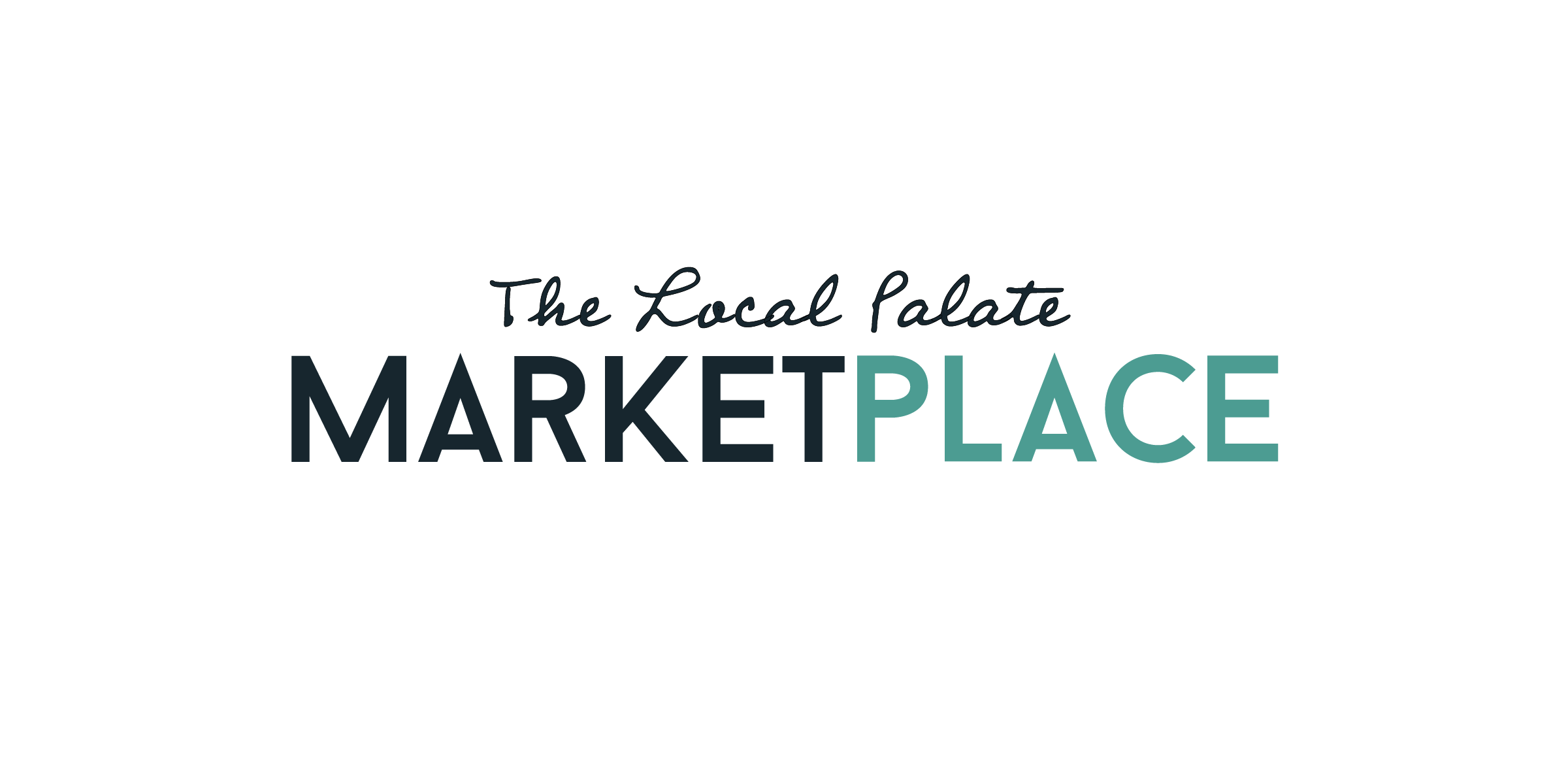A farmer and a forager plumb wild Appalachia for a modern elixir
Forget moonshine.
Asheville’s Chris Bower, there’s another tipple that brings him home to his native southern mountains. It’s called Appalachian Fernet, a top-secret witch’s brew of foraged botanicals and herbs that he concocted with friends as the flagship brand of mountain distillery Eda Rhyne, named for an old Appalachian folk ballad.
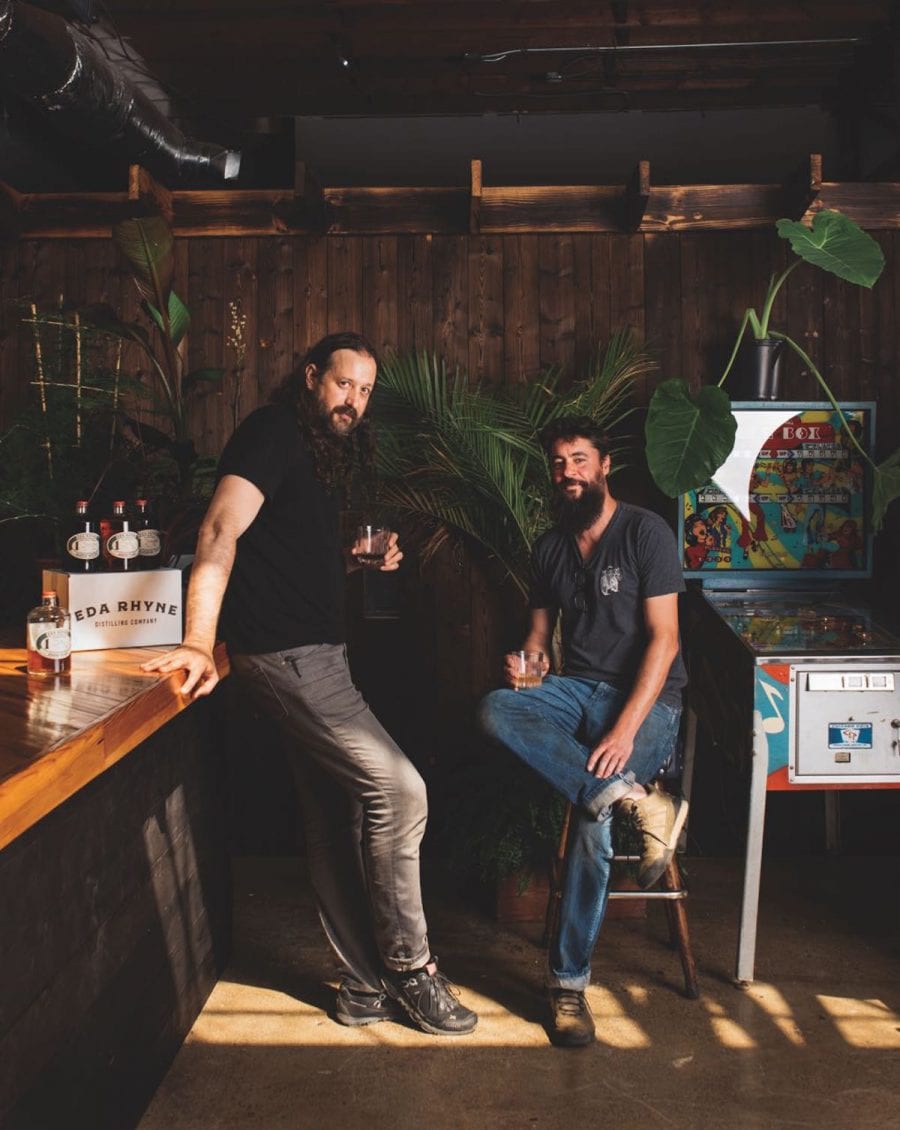
The recipe has deep roots in the traditional folk medicine that Bower grew up learning about from his grandparents in the wilds of Haywood County, North Carolina, but let’s get one thing out of the way: This is not an elixir or any other term that might imply health benefits. The federal government takes such words exceedingly seriously, and you won’t find anything of the like on an Eda Rhyne bottle.
After all, this is not your granny’s herbal tonic, nor her kitchen-sink hooch. Though admittedly that’s how Appalachian Fernet got its start, years ago in a cabin in the woods following an inspired day of foraging—or wildcrafting, as the Eda Rhyne folks like to call it—after which Bower says the idea came to him in a vision.
The current iteration, a more palatable (and regulated) take on Bower’s early concoctions, is every bit a good-time drink, even if it might not taste like it at first sip. Like Appalachia itself, fernet isn’t for everyone. It looks like flat cola and tastes of bitter roots and mint; its most famous ingredient is myrrh tree resin (yes, as in one of the gifts of the Magi). The experience of drinking fernet is so intense, so bracing, it’s been called the “liqueur of Hades.”
Still, the most famous type of fernet, Italy’s Fernet Branca, has captured the zeitgeist in the trendy cocktail bars of San Francisco—and, subsequently, places like Asheville—in recent years. Sipping a fernet and Coke in Buenos Aires is akin to sipping a gin and tonic in Barcelona.
Like with the tightlipped makers of Fernet Branca, the Eda Rhyne owners aren’t spilling any part of the recipe for Appalachian Fernet. All they’ll say is that some 85 to 90 percent of the ingredients—including thirty-plus botanicals—can be found growing in the hills and hollows around Asheville, and that many of those plants have been used in herbal medicine throughout history.
“It’s a very complex spirit that really captures Western North Carolina terroir,” Bower says. “It speaks of place; it is made of place. Asheville chef Elliott Moss once drank this and said, ‘You know what, this tastes like the mountains.’ Another time, I had a woman come to the tasting room and say, ‘This tastes like hunting with my dad.’ I thought, ‘Wow, now we’re getting somewhere.’”
For Bower, Appalachian Fernet is the liquid summation of his own life, from tromping through the woods with his Pappy to running a pair of popular dive bars in Asheville.
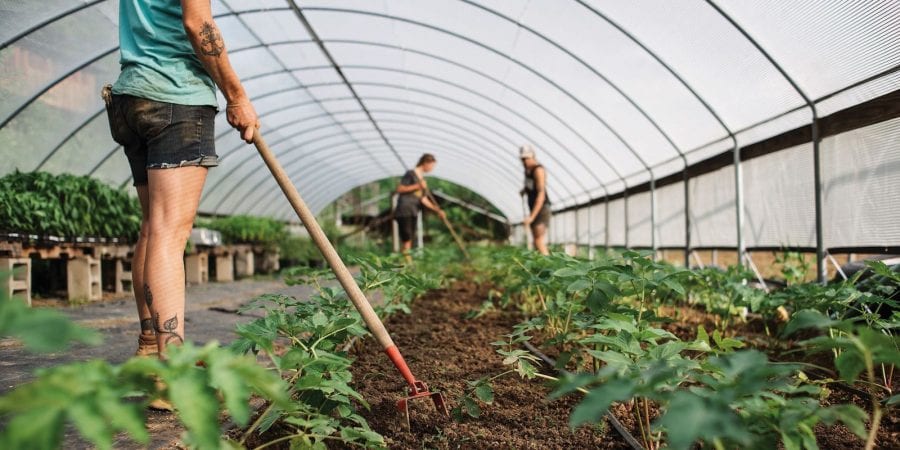
FARM TO FLASK
Just as the complexity of fernet is greater than the many botanicals that go into it, Bower is only one player in Eda Rhyne’s story.
At the same time that Bower was playing around with foraged herbs and corn whiskey, farmer Rett Murphy was dreaming of opening a distillery. For the past fifteen years, he has toiled in the vegetable and blueberry fields of twelve-acre Aardvark Farm, which he co-owns with Kathryn Skelley-Watts, along the meandering Cane River in nearby Burnsville.
A self-professed “tinkerer,” Murphy became interested in making spirits a few years ago, as farm burnout began to set in and he started looking for a new challenge. In 2015, North Carolina passed legislation that allowed distillery tasting rooms to sell liquor directly to customers. The change convinced Murphy that opening a distillery might be doable, especially amid the thriving beer tourism landscape of Asheville.
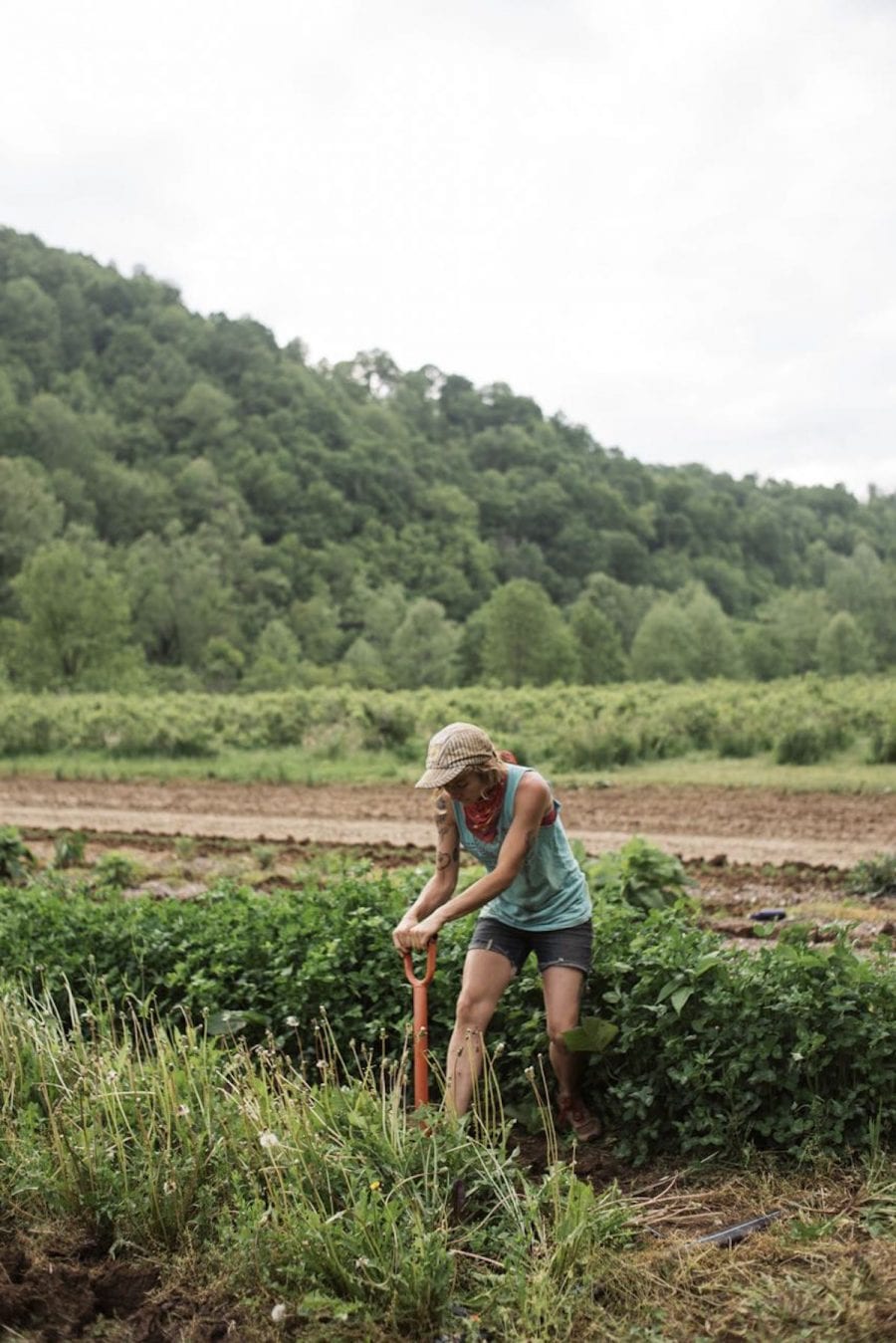
“The distillery is an extension of my farm—it’s a different way to market things we grow and allows us to grow things that are typically hard to sell,” says Murphy. “Historically, distilling in the United States was a thing that farmers did. Distillate travels better than a ton of corn, it stores well, you don’t have an issue with pests—and it’s a lot more valuable.”
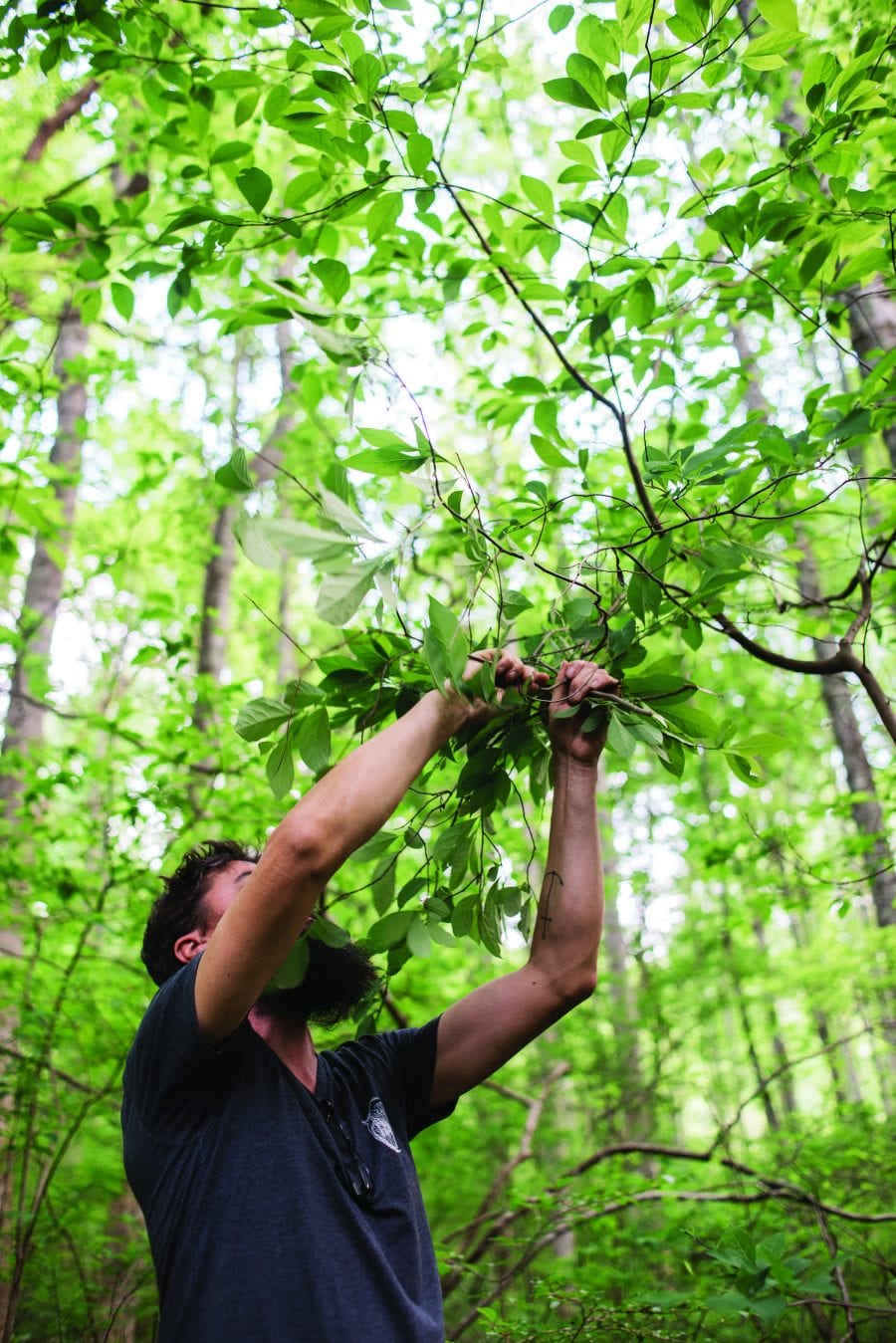
Like Bower, he credits his family with planting the seeds of devotion to the land. His late great-grandmother Alma Pinnix—whose namesake is planned for the brand’s forthcoming botanical-infused gin—was an avid guerrilla gardener, before such a term existed, in unused plots of land and abandoned spaces around Greensboro, North Carolina. Her hometown continues to maintain many of those original gardens and even named a street after her in gratitude for her grassroots beautification efforts.
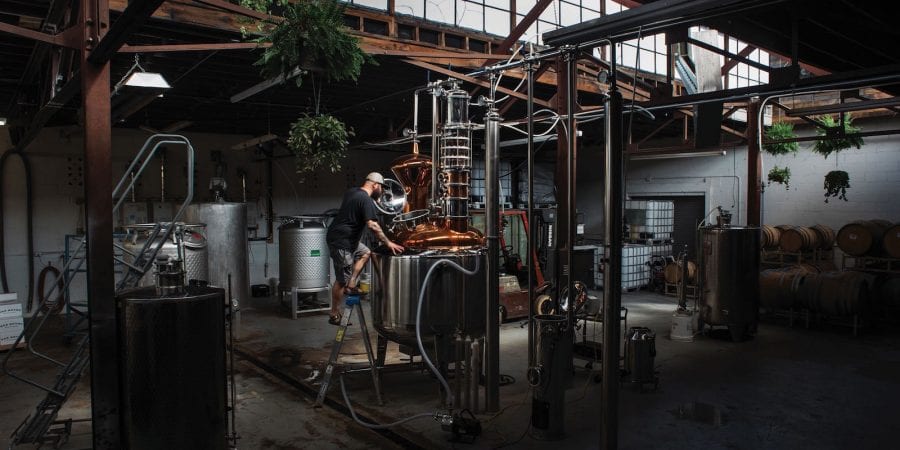
ENSEMBLE CAST
A couple of years ago, through a “really wonderful stroke of luck,” as Murphy describes it, he happened upon a space for rent on the edge of Asheville’s Biltmore Village, not far from the gates to the grand Biltmore Estate. Bower and Murphy knew each other socially, and Murphy invited Bower to check out the space with him. After discussing his ideas for whiskey and gin, he mentioned in an offhand comment the possibility of making “something weird like fernet.” “Have you tried my fernet?” Bower asked. Murphy had not, so they drove straight to Bower’s house, sampled a few batches, and shook hands on the business partnership.
The pair invited a couple more friends into the fold as owners: Andrew Bertone, a former helicopter mechanic for the US Marine Corps from Kentucky, to run daily operations; and local contractor Pierce Harmon, who owns Asheville’s River Birch Builders (and counts rum runners and bootleggers as ancestors), to oversee the distillery’s buildout.
After two years working to get the operation up and running, Eda Rhyne’s tasting room opened this spring. It’s small and no-frills, other than an old Wurlitzer, vintage pinball machine, and red vinyl barber chair. A mural by local artist Hannah Dansie engulfs one wall. Dried botanicals hang tantalizingly from another—ingredient clues or simple decoration? A few black-and-white portraits are displayed prominently, without explanation. All in all, the vibe is a little bit eccentric, a little bit refined, and certainly a mashup of ideas, all of which feel right at home at Eda Rhyne.
In addition to the bold Appalachian Fernet, the bar offers samples of Eda Rhyne’s lighter, more subtle Amaro Flora as well as bittersweet Rustic Nocino, a limited-edition liqueur made of local black walnuts. Guests can peer at barrels aging rye whiskey, the distillery’s tent-pole spirit set for release this winter.
True to form, it’s no ordinary rye whiskey, with a mash bill made up of rare heirloom yellow corn and a landrace rye called Seashore Black on the edge of extinction, sourced from Asheville artisan grain suppliers Carolina Ground and Riverbend Malt House. Giving these crops a commercial outlet helps conserve them, says Bower. “Not only that, but they’re regional grains that have very distinct flavor compounds,” he says. “We’re making a whiskey that hasn’t been tasted on a commercial level in 150 years—the corn variety we’re using may never have been used outside of home distilling—and that’s exciting.”
For Murphy, those premium ingredients are the soul of the brand. “We are set on making whiskey that is distinct,” he says. Equally careful consideration has gone into every step of the distillation process. Using mostly repurposed equipment, the guys at Eda Rhyne strive to reduce their environmental impact while innovating sustainable distillation methods.
All water in the process is used at least twice, sometimes three times, by harvesting hot water from the still, Murphy says. The technique not only saves all the water used, it also preserves heat, which has the added benefit of providing instant hot water. “We control the temperature of water by additions of hot and cold water, instead of being able to turn a dial,” Murphy says. “It’s a balancing act, but it’s working great.”
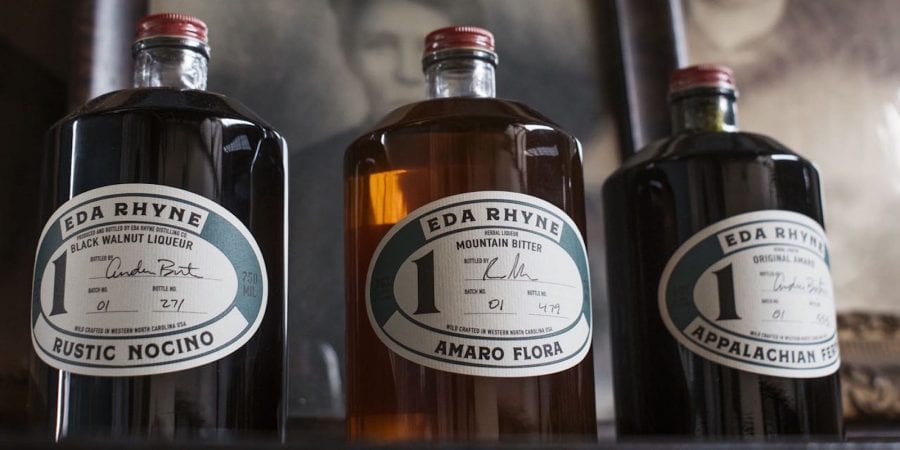
MIS-EN-SCENE
By all measures Eda Rhyne is a direct byproduct of its environment. “Western North Carolina is miraculous as far as biodiversity,” Murphy says. The Eda Rhyne website extolls the region’s micro-habitats, citing some 2,500 plant species, 1,100 of which have “been reported to have medicinal properties,” going on to point out that spirits have often acted as an ideal conduit for “extracting the healing qualities of these plants.”
The classic compendiums of southern Appalachian folk knowledge known as the Foxfire book series repeatedly reference herbal tonics, such as sassafras tea and ginseng elixirs. Even today Asheville remains a hive of herbalists.
And then there’s its status as Beer City USA, home to more than thirty breweries within city limits—an economic force to the tune of $934 million, according to one industry analysis. Add the city’s nationally recognized food scene, residents who value creativity and artisanship, and a voracious enthusiasm for all things local, and you can understand why spirits are so high at Eda Rhyne.
Says Bower: “We get to help support these endangered heirloom grains; we get to forage for botanicals in the mountains; and we get to have great drinks with our friends—and meet new friends.”
This story was originally published in the August 2018 Issue.
Read also about peanuts in coke
share
trending content
-
FINAL VOTING for Your Favorite Southern Culinary Town
-
New Myrtle Beach Restaurants Making Waves
-
New Restaurants in Arkansas
-
Shrimp and Grits: A History
by Erin Byers Murray -
Tea Cakes, A Brief History
by TLP Editors
More From Southern Makers
-
A Spirited Approach with Wonderbird Spirits | Listen
-
Kuluntu Bakery Bakes Barriers | Listen
-
Scouting a Good Cup of Coffee | Listen
-
A Hot Take on Southern Chili Lab
-
Zero Proof Living with Sèchey and Target


